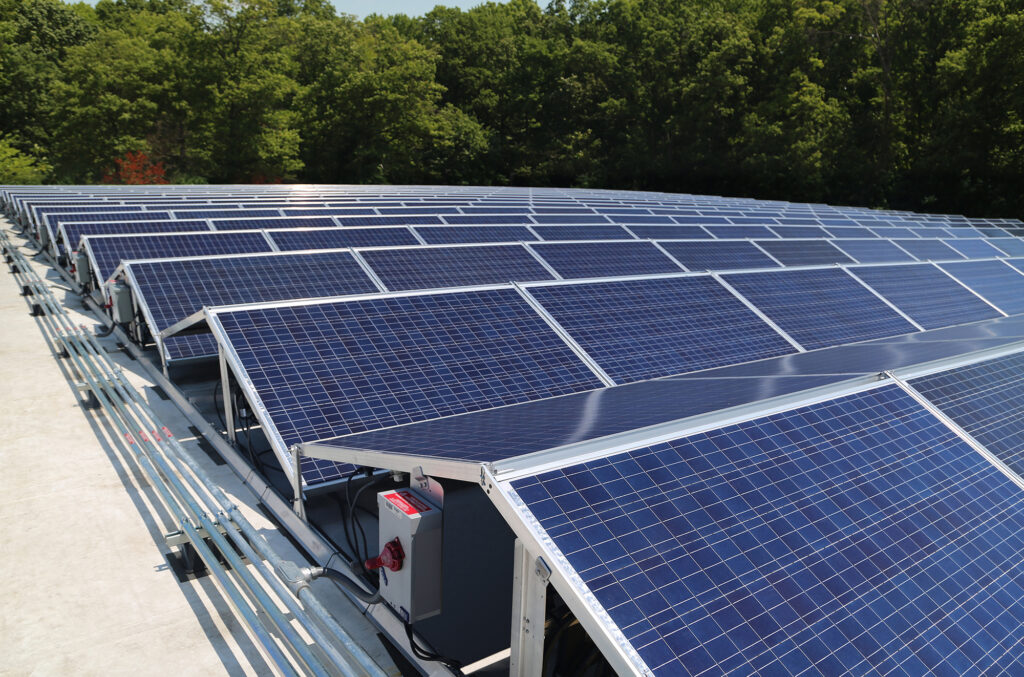Solar panels are often tilted for several reasons to optimize their efficiency and energy production.
- Maximizing Sun Exposure: Tilting solar panels allows them to capture the maximum amount of sunlight throughout the day. The angle of tilt is usually set to match the latitude of the installation site, which helps the panels face the sun more directly and receive sunlight for a larger portion of the day.
- Reducing Shading: Tilting solar panels can help minimize the shading caused by nearby objects like trees, buildings, or other structures. By angling the panels appropriately, you can reduce the chances of shadows falling on the panels, which can significantly impact their energy output.
- Optimizing Seasonal Changes: The angle of the sun changes throughout the year due to the Earth’s axial tilt. By tilting the solar panels, you can optimize their orientation to capture more sunlight during different seasons. Adjusting the tilt angle a few times a year can help you get the most energy production throughout all seasons.
- Reducing Reflection and Glare: Tilting solar panels can also reduce reflection and glare. When panels are flat, sunlight may hit them at an angle that causes more reflection and glare. Tilting them at the right angle can help mitigate this issue.
- Self-Cleaning: In some cases, tilting solar panels can aid in self-cleaning. Rainwater can more effectively wash away dirt, dust, and debris when the panels are tilted, helping to maintain their efficiency over time.
- Cooling Benefits: Tilted panels allow for better airflow underneath them, which can help dissipate heat and prevent overheating. Solar panels can experience a decrease in efficiency as they heat up, so better ventilation can help maintain their performance.
- Snow Shedding: In regions that experience snowfall, tilting solar panels can aid in shedding snow accumulation. When panels are tilted, snow is less likely to accumulate and can slide off more easily, preventing snow buildup from reducing energy production.
It’s important to note that the optimal tilt angle for solar panels depends on factors such as the latitude of the installation site, the specific goals of the solar system (maximizing energy production, minimizing cost, etc.), and any local obstructions or shading. It’s common to use tools or software that calculate the optimal tilt angle based on these factors to achieve the best possible energy production.


